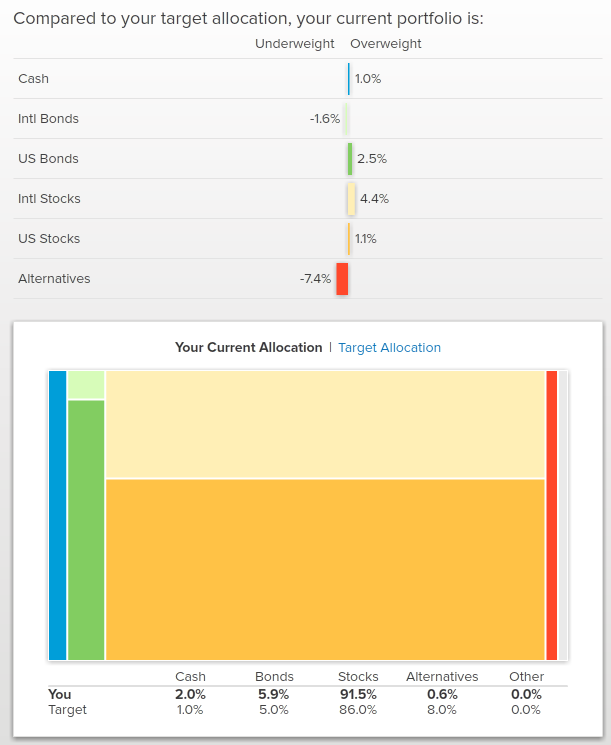How Often Should You Rebalance
Post on: 24 Май, 2015 No Comment

In my previous post. I looked at the reasons why investors should occasionally rebalance their portfolios. When a portfolio contains both fixed-income and equities, rebalancing is mostly about risk management: if it also results in higher returns, that’s a secondary benefit. Having a disciplined rebalancing schedule also helps you control your behaviour and resist the pressure to chase performance.
That’s the theory behind rebalancing. But it doesn’t answer the most common question: “How often should I do it?” Like so many aspects of investing, the answer depends a lot on your situation. There are at least three strategies to consider.
1. Rebalancing by the calendar
Perhaps the most common rebalancing strategy is to make adjustments once a year. There’s nothing magical about that one-year interval. Indeed, many academic studies have tried to determine the optimal rebalancing period — monthly, quarterly, semi-annually, annually or even every two years — but the research is inconclusive. Since there’s no clear benefit to rebalancing more frequently, once a year should be fine for most investors.
If you’re using a tax-sheltered account, it doesn’t really matter which date you choose, but there are some practical reasons for rebalancing early in the year. If you make a lump-sum contribution to your RRSP just before the deadline, you can rebalance at the same time. In addition, just about all ETFs pay dividends or interest at the end of the calendar year. That means the cash balance in your account is likely to be highest in early January, and you can reinvest all that idle money when you rebalance.
If you’re investing in a taxable account, in might make more sense to rebalance in December, because you can combine your buys and sells with a tax-loss harvesting strategy. However, before you buy new ETFs (or additional shares of ones you already own), check to make sure that the fund will not be distributing capital gains at the end of the year. (These ideas are a bit complicated: the links in this paragraph will take you to posts that explain them in more detail.)
Annual rebalancing has the benefit of being simple and convenient. The downside is that you may go many months with an off-target portfolio if a big market move occurs shortly after your rebalancing date.
2. Rebalancing by thresholds
Another common strategy is to rebalance only when an asset class drifts off target by a certain percentage. Financial author Larry Swedroe recommends the “5/25 rule,” which says you only need to rebalance when an asset class is off by an absolute 5%, or a relative 25%.
Following this rule, if your target bond allocation is 40%, you would rebalance anytime it was off by an absolute 5% — that is, above 45%, or below 35%. For asset classes with smaller targets, the “relative 25%” figure is more useful. If you’ve allocated 10% to emerging markets, you’d rebalance any time this fund dipped below 7.5% or rose above 12.5% (because 2.5% is 25% of 10%).
This method requires you to monitor your holdings more closely, but it works well for portfolios with a small number of funds. However, it’s not well suited to multi-asset-class portfolios, since it would result in a lot of tiny adjustments. My Über-Tuber portfolio has several target allocations of just 6%. If you followed the 5/25 rule to the letter, you would rebalance these asset classes any time they went up or down by just 1.5%.
Threshold rebalancing may also be harder emotionally, because you’ll be doing it after every significant market correction and rally, selling what’s hot and buying what’s not.
3. Rebalancing with cash flows
A third option is to rebalance whenever you add new money or make withdrawals. Let’s say an investor allocates equal amounts to Canadian, US, and international equity index funds, and that she contributes $1,000 a month to her account. The value of her funds are currently $15,300 Canadian, $15,500 US and $15,000 international. When she makes her next contribution, she would divide it as follows: $300 to the Canadian, $100 to the US, and $600 to the international fund. When she’s done, each fund will have exactly $15,600.
This strategy is ideal for monthly contributors who have small portfolios of index mutual funds. With larger portfolios (or smaller contributions) it may not be possible, because there wont always be enough new money to prop up all the lagging funds.
You can also rebalance with cash outflows. Assume the above investor needs to withdraw $5,000 from her portfolio. She could redeem $1,700 of the Canadian fund, $1,900 of the US fund and $1,400 of the international fund. That would leave $13,600 in each asset class.
Advisors often use this strategy when managing large retirement portfolios. RRIF investors are required to withdraw a certain percentage of their accounts each year. which may require them to sell some of their assets. By trimming back whichever funds have risen above their target allocations, they can rebalance the portfolio at the same time.
Costs are always a factor
There’s no reason why you can’t use some combination of all three of these strategies. You might schedule an annual rebalancing date, but make an interim adjustment if an asset class moves off target by five percentage points during the year. And if you make any unplanned contributions or withdrawals to the account along the way, you can do a little ad hoc rebalancing then, too.
However, one of the most important concepts to remember is rebalancing often comes with costs, either in trading commissions or taxes. If you rebalance too often, the costs can easily overwhelm the benefits. In my next post, I’ll take a closer look at this trade-off.














